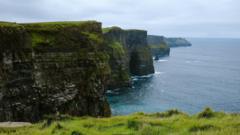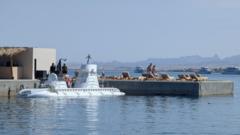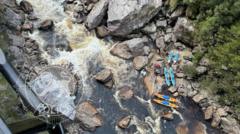The Jonestown settlement in Guyana, once the site of the infamous mass murder-suicide orchestrated by Jim Jones, has opened its doors to tourists nearly 50 years after the tragedy claimed over 900 lives. Despite a long history of hesitance to commemorate this harrowing chapter, the new Jonestown Memorial Tour invites visitors to engage with the events that transpired there on November 18, 1978.
Critics argue that the tour, operated by Wanderlust Adventures GY, commodifies grief and disrespects the memories of those lost. Survivors of the Peoples Temple and members from Guyana express discomfort, stating that associating tourism with such a significant calamity may lead to exploitation. They view the $750 tour price—which includes transportation from Georgetown and a stay near Port Kaituma—as a way to profit from pain rather than a genuine act of remembrance.
Conversely, defenders of the tour advocate that it serves as a valuable educational experience, allowing tourists to confront historical lessons about cult dynamics and manipulation. They suggest that developing an understanding of the past is crucial in preventing the recurrence of similar tragedies.
At the site itself, a singular plaque stands as a solemn reminder of those lost—once home to almost 1,000 members of the Peoples Temple, the physical structures have been overtaken by nature, leading to reflections on the fleeting nature of life and memory. The juxtaposition of tourism against this backdrop invites essential conversations about ethics, remembrance, and the legacy of Jonestown.
As discussions continue regarding the appropriateness of these tours, the site remains a stark reminder of the impacts of fanaticism and the complex relationship between history and memory.
Critics argue that the tour, operated by Wanderlust Adventures GY, commodifies grief and disrespects the memories of those lost. Survivors of the Peoples Temple and members from Guyana express discomfort, stating that associating tourism with such a significant calamity may lead to exploitation. They view the $750 tour price—which includes transportation from Georgetown and a stay near Port Kaituma—as a way to profit from pain rather than a genuine act of remembrance.
Conversely, defenders of the tour advocate that it serves as a valuable educational experience, allowing tourists to confront historical lessons about cult dynamics and manipulation. They suggest that developing an understanding of the past is crucial in preventing the recurrence of similar tragedies.
At the site itself, a singular plaque stands as a solemn reminder of those lost—once home to almost 1,000 members of the Peoples Temple, the physical structures have been overtaken by nature, leading to reflections on the fleeting nature of life and memory. The juxtaposition of tourism against this backdrop invites essential conversations about ethics, remembrance, and the legacy of Jonestown.
As discussions continue regarding the appropriateness of these tours, the site remains a stark reminder of the impacts of fanaticism and the complex relationship between history and memory.













